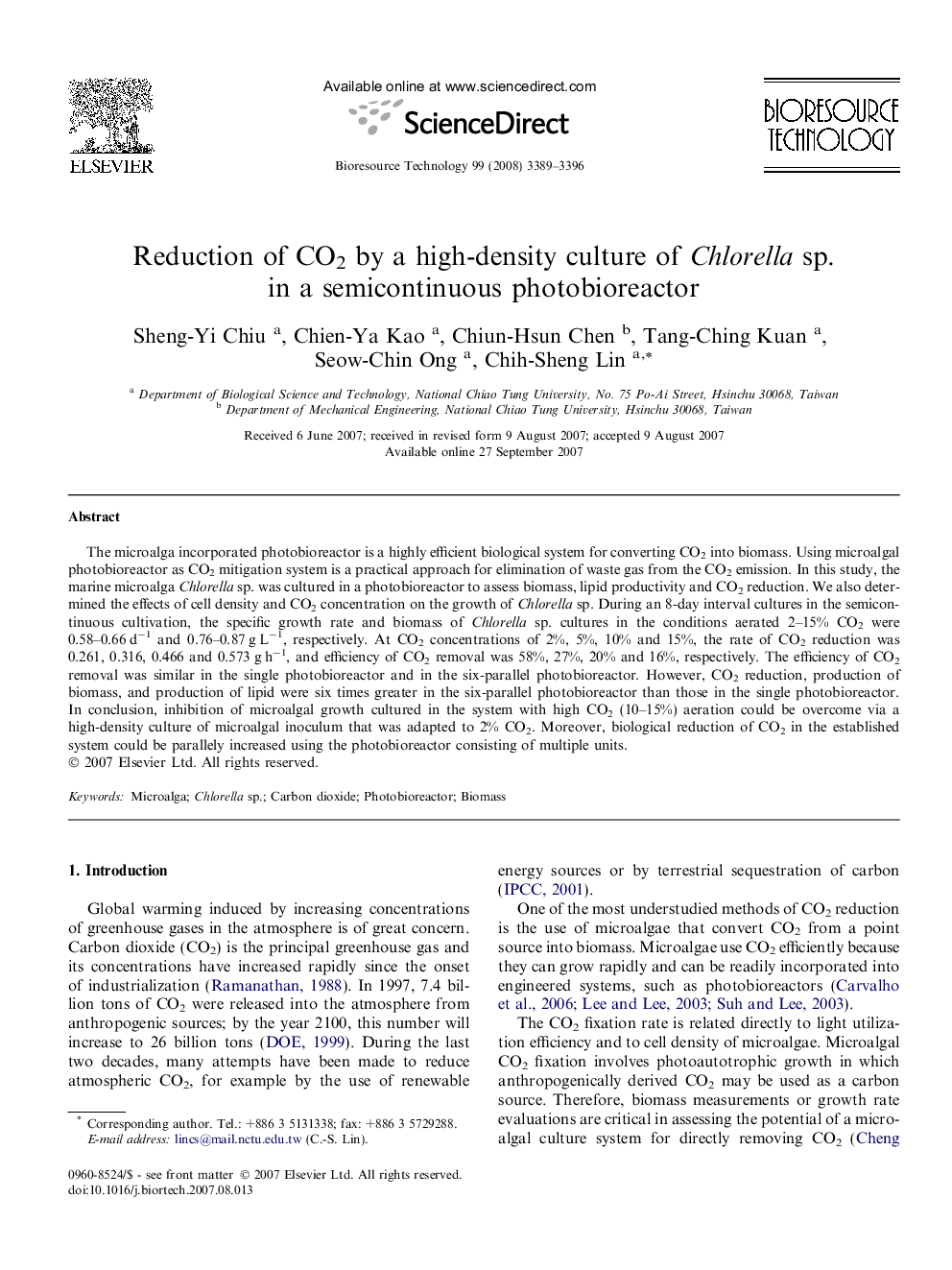| Article ID | Journal | Published Year | Pages | File Type |
|---|---|---|---|---|
| 686321 | Bioresource Technology | 2008 | 8 Pages |
The microalga incorporated photobioreactor is a highly efficient biological system for converting CO2 into biomass. Using microalgal photobioreactor as CO2 mitigation system is a practical approach for elimination of waste gas from the CO2 emission. In this study, the marine microalga Chlorella sp. was cultured in a photobioreactor to assess biomass, lipid productivity and CO2 reduction. We also determined the effects of cell density and CO2 concentration on the growth of Chlorella sp. During an 8-day interval cultures in the semicontinuous cultivation, the specific growth rate and biomass of Chlorella sp. cultures in the conditions aerated 2–15% CO2 were 0.58–0.66 d−1 and 0.76–0.87 g L−1, respectively. At CO2 concentrations of 2%, 5%, 10% and 15%, the rate of CO2 reduction was 0.261, 0.316, 0.466 and 0.573 g h−1, and efficiency of CO2 removal was 58%, 27%, 20% and 16%, respectively. The efficiency of CO2 removal was similar in the single photobioreactor and in the six-parallel photobioreactor. However, CO2 reduction, production of biomass, and production of lipid were six times greater in the six-parallel photobioreactor than those in the single photobioreactor. In conclusion, inhibition of microalgal growth cultured in the system with high CO2 (10–15%) aeration could be overcome via a high-density culture of microalgal inoculum that was adapted to 2% CO2. Moreover, biological reduction of CO2 in the established system could be parallely increased using the photobioreactor consisting of multiple units.
